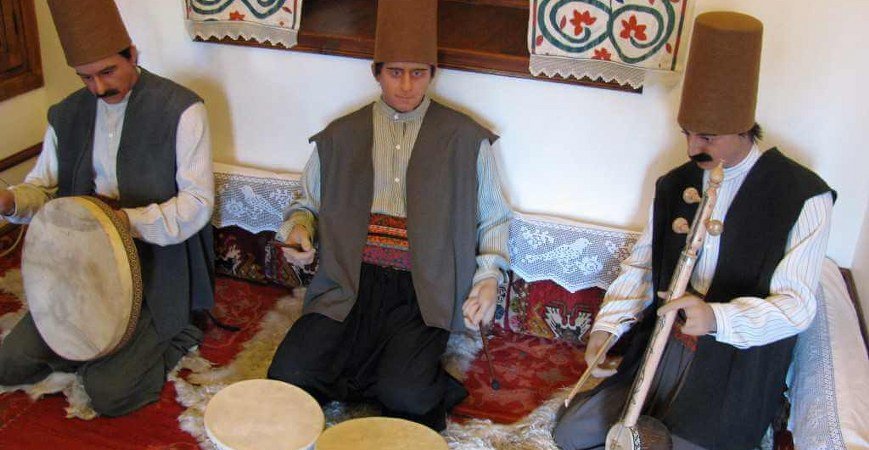
Turkey Konya Mevlana Museum – Chapter 5
Turkey Konya Mevlana Museum – Chapter 5,
The kitchen is both the place where the dargah food was prepared and also a Chilehane (novitiate) where novice dervishes took their vows before entering the Mevlevi order and lived. According to custom, during the 1001 days of their novitiate, the novices worked in the kitchen. At the end of this period, a ceremony was held at which the novice was allocated a cell, and moved to live there. Today kitchen utensils used in the Mevlana Dargah are exhibited in the kitchen.
Chelebi Apartment (Library): Adjoining the south side of the tomb is a glass windowed room where the sheiks of the Dargah used to receive guests, called the Celebi Apartment. The window which looks onto the Tomb is called the Niyaz Window or Supplicant Window. Today the Chelebi Apartment is used as the Library of the Museum and contains 6 thousand printed and manuscript books. The museum also possesses three private libraries containing books donated by Abdulbaki Golpinarli, M. Ferid Ugur, and Mehmet Onder.
Hall of Honour (Director’s Office): Adjoining the kitchen is a large hall called the Hall of Honour (Meydan-i Serif) which today is used as the Director’s Office. This hall was formerly used for conversations between the sheik of the Dargah and the dervishes. In 1867 the ceiling of this room was decorated with designs and pictures in oil paint. Besides this, there is a single storied building on the north side of the courtyard near the Chelebi Gate called the Chelebi Guest House which was originally used as accommodation for visiting dervishes.
Fountain and Seb’i Arus Pool: In the courtyard of the museum is a fountain made of sky marble, which was built by Yavuz Sultan Selim in 1512. The fountain was repaired in 1595 by Sultan Mehmed III and in 1868 by Sultan Abdulaziz. In front of the Kitchen is a six-sided marble pool which is named ‘Celebration Night’ (Seb-i Arus) because the dervishes danced beside it on the anniversaries of Mevlana’s death.
You can continue to find more details fort he Konya Mevlana Museum in Chapter 6.